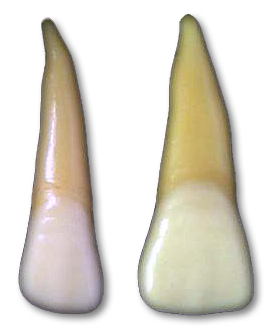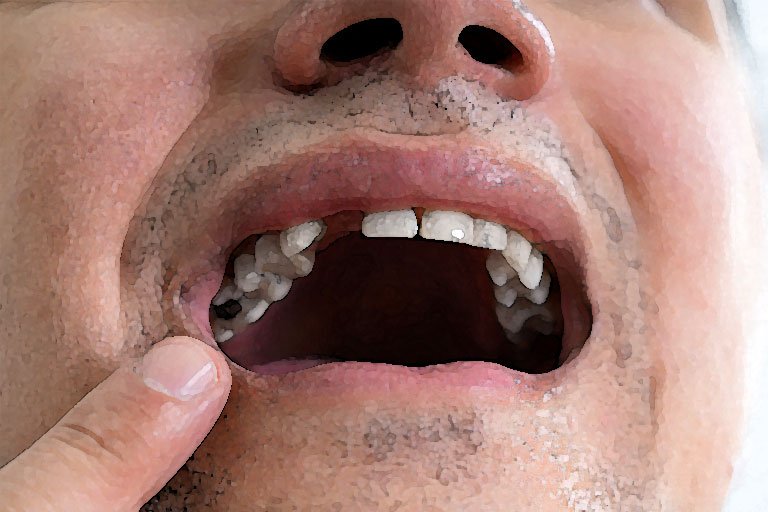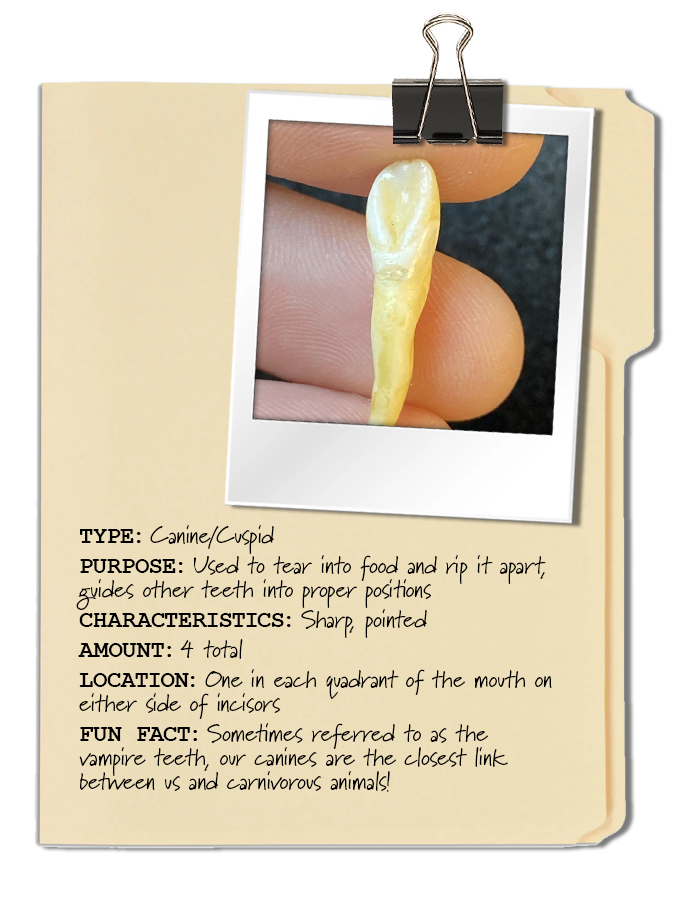Exploring the Secrets Behind Your Smile
Learn About Four Important Teeth During National Smiles Month
Starting May 16th until June 16th, National Smiles Month is a great time to celebrate our mouths and all they do for us. From eating to speaking, our smiles are important for daily life. In deference to National Smiles Month, let’s take a closer look at each of the four main types of teeth that make up your smile.
Beyond the Surface of a Smile
The most visibly prominent part of our smile is made up of two different kinds of teeth that each serve a very different purpose. While one greatly influences our speech and overall bite, the other is responsible for much of the way we eat along with the placement of our other teeth.
Let’s consider the individual roles that incisors and canine teeth play in our smiles.
INCISOR TEETH
Usually the first adult teeth to erupt after our primary teeth have fallen out, incisors are the teeth that make up most of our smile. Often referred to as ‘anterior’ teeth, the typical mouth will have a total of 8 incisors comprised of central incisors which are found at the front and center of the jaw, and lateral incisors which are found on either side of the central incisors.
CANINE TEETH
Believe it or not, our canine teeth, also known as ‘cuspids,’ are some of the most important teeth you have! With the longest root of any other tooth in the mouth, canine teeth serve as a guidepost to help new teeth come in properly. They also help us to form words correctly when we speak.
Unfortunately, due to their location in the mouth, canine teeth are prone to erosion and gum recession. They are also the most common teeth to become impacted. Thankfully, the latter can be solved with orthodontic treatments like braces.
Molars and More
Moving to the back of the mouth, our teeth become larger and deeply rooted into our jawbone. Responsible for the bulk of our chewing, premolar and molar teeth are the ‘strongmen’ of our smiles and play a necessary role in our day to day lives.
PREMOLAR TEETH
On average, our premolars (also known as ‘bicuspids’) first erupt around twelve to thirteen years of age. Smaller in size than their back neighbors the molars, our premolar teeth are larger and wider than canines or incisors. Another defining feature of these teeth is that, rather than coming to a point, they have a flat surface area designed for grinding food when we eat.
MOLAR TEETH
The strongest teeth in our mouths, our molars serve two primary functions which include crushing food into easily digestible pieces and keeping our other teeth in position while supporting our jaws and other facial bones.
At around eighteen years of age, many adults develop what is known as ‘third molars,’ otherwise called “wisdom teeth.” While they are often surgically removed, these subtypes of molars provide additional strength for our jawbones and assist with eating.
TLC for All of Your Teeth
Each type of tooth in our mouths has a different purpose and their individual functions serve to make everyday life easier. Like any other team, all four types of our teeth work together to help us eat, speak, and perform other basic activities we often overlook.
At Alexandria Smiles, we know just how important it is to take care of your teeth so they can continue taking care of you. By following through with regular cleanings and check-ups, we too can work as a team to give you the best (and healthiest) smile possible.
What Are You Waiting For?
Making an appointment is as easy as clicking the button below:
Other Articles You May Enjoy…
The Truth about Your Wisest Tooth
Is it time to begin thinking about removing your wisdom teeth? Before scheduling an appointment with the oral surgeon, learn all about your third molars and discover the reasons why removal may be right for you.
Are Dental Implants Right for You?
Missing teeth do more than alter the appearance of your smile, they can completely change the way your mouth operates! Discover the restorative possibilities of dental implants.
As technology advances, new appliances are designed to help us better the way we take care of our teeth. Keep reading to learn about the future of dentistry and the impact these new tools can have on your smile!
















